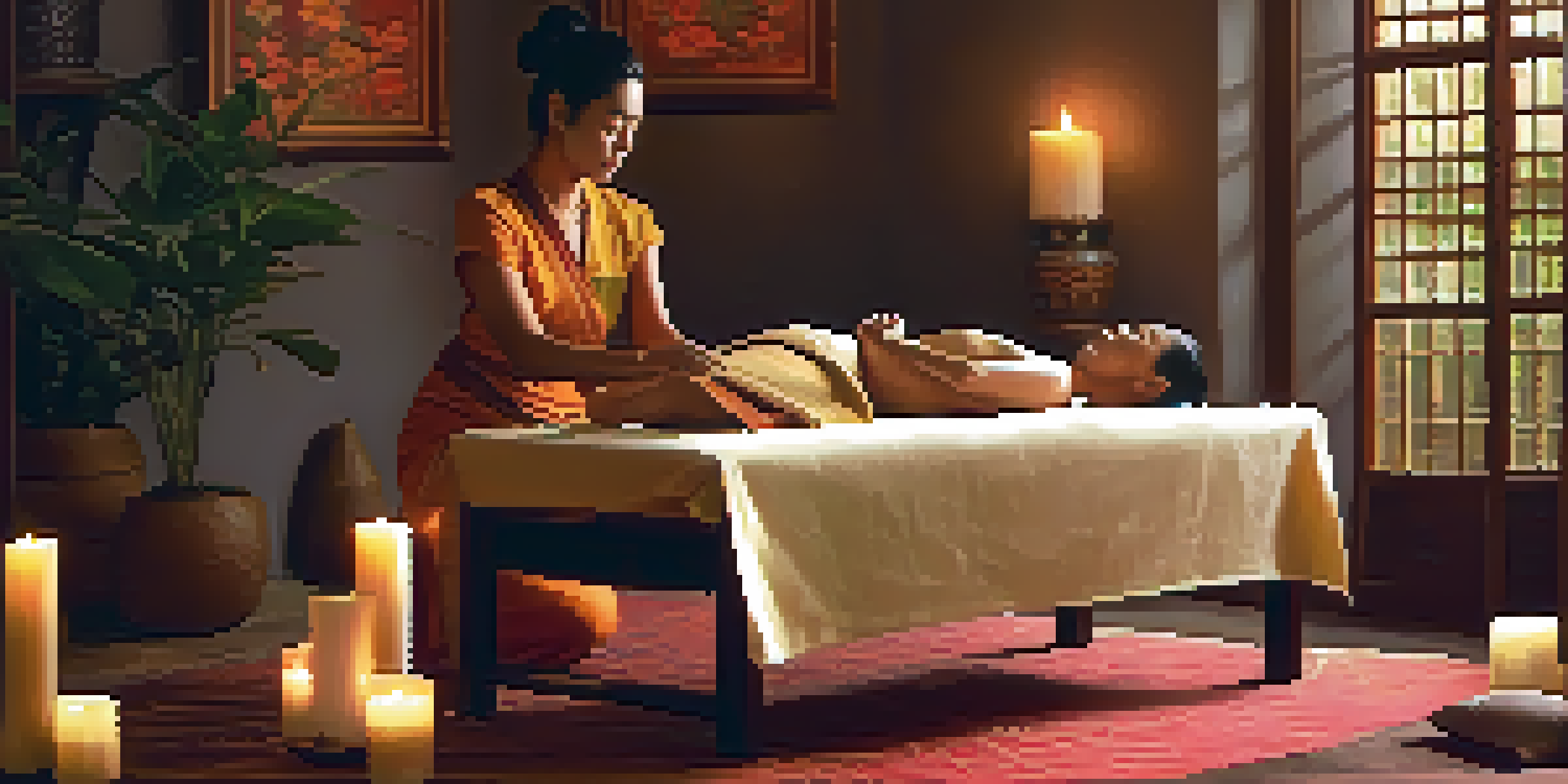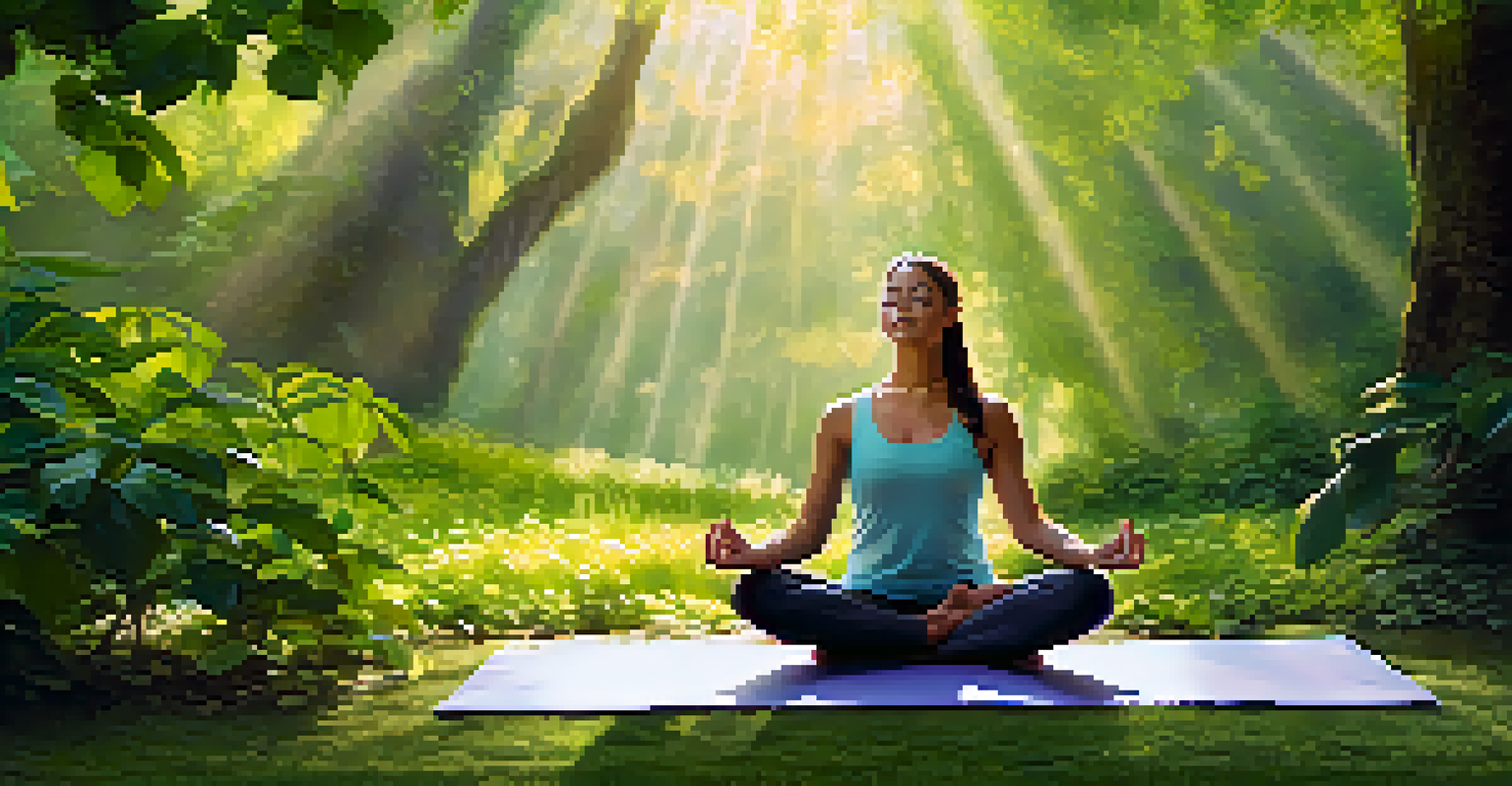The Importance of Stretching in Thai Massage Techniques

Understanding Thai Massage and Its Principles
Thai massage is an ancient healing practice that combines acupressure, yoga-like stretching, and energy line manipulation. The technique focuses on energy pathways known as 'Sen,' which are believed to affect your overall health and well-being. By understanding these principles, practitioners can effectively promote relaxation and rejuvenation during a session.
The body is a temple, and we must take care of it, nurturing the connection between body and mind.
In Thai massage, the therapist uses their hands, feet, elbows, and knees to apply pressure and stretch the client's body in various positions. This holistic approach not only alleviates physical tension but also aims to restore balance within the body's energy system. As a result, the practice is both therapeutic and invigorating.
Stretching is a fundamental aspect of Thai massage, which sets it apart from other massage styles. By incorporating dynamic stretches, the therapist helps to improve flexibility and range of motion, allowing the body to move more freely and comfortably.
The Science Behind Stretching and Its Benefits
Stretching is not just about flexibility; it has numerous physical and psychological benefits. Research shows that regular stretching can improve blood circulation, reduce muscle soreness, and enhance overall athletic performance. By integrating stretching into Thai massage, clients can experience these benefits in a uniquely holistic way.

Additionally, stretching promotes relaxation by activating the body's parasympathetic nervous system, which helps to lower stress levels. This is especially important in today's fast-paced world, where stress can significantly impact our physical and mental health. As clients unwind during a Thai massage, they can enjoy the calming effects of both stretching and massage techniques.
Thai Massage Enhances Flexibility
The incorporation of dynamic stretching in Thai massage significantly improves flexibility and body awareness.
Moreover, stretching can help to improve posture and alignment, which are crucial for preventing injuries. By focusing on stretching specific muscle groups during a massage session, therapists can help clients maintain better posture and reduce the risk of future discomfort.
Enhancing Flexibility Through Thai Massage Techniques
One of the standout features of Thai massage is its emphasis on flexibility. The use of assisted stretching allows clients to achieve a deeper stretch than they might be able to do on their own. This not only enhances flexibility but also contributes to a greater sense of body awareness.
Stretching is not just about the body; it's about the mind and spirit as well.
For instance, when a therapist guides a client through a series of stretches, they can help them identify areas of tension and tightness. This targeted approach encourages clients to listen to their bodies and become more in tune with their physical needs. As a result, clients often leave feeling more limber and revitalized.
Furthermore, improved flexibility can lead to better performance in daily activities and sports. By regularly practicing Thai massage, individuals can maintain and even enhance their flexibility over time, making it an essential component of any wellness routine.
The Role of Breath in Stretching and Relaxation
Breath plays a vital role in both stretching and relaxation during Thai massage. Practitioners often encourage clients to synchronize their breath with each movement, promoting a deeper sense of relaxation and mindfulness. This mind-body connection enhances the overall experience and allows clients to release tension more effectively.
For example, inhaling deeply while stretching can help to expand the chest and open up the body, while exhaling allows for a deeper release of tight muscles. This rhythmic breathing not only enhances the physical benefits of stretching but also calms the mind, making the session more therapeutic.
Breath is Key to Relaxation
Synchronizing breath with movement during Thai massage promotes deeper relaxation and enhances the therapeutic experience.
Cultivating awareness of breath can also extend beyond the massage session. Clients who practice mindful breathing during stretching may find it easier to manage stress and anxiety in their daily lives, leading to a more balanced and peaceful existence.
Incorporating Stretching into Daily Routines
While Thai massage offers a wonderful opportunity for stretching, it's essential to incorporate these practices into daily routines. Simple stretches can be done at home or during breaks at work to maintain flexibility and reduce tension. Consistency is key to reaping the full benefits of stretching.
For instance, setting aside just 10 minutes a day for gentle stretching can significantly enhance flexibility and overall well-being. Whether it's a few yoga poses or targeted stretches for tight areas, finding what works for you can create lasting positive changes.
Additionally, clients who regularly receive Thai massage may find that they are more motivated to maintain their stretching routines. The immediate benefits felt after a massage can serve as a reminder to continue caring for their bodies and prioritize their health.
The Emotional Benefits of Stretching in Thai Massage
Beyond physical benefits, stretching during Thai massage can also have profound emotional effects. Many clients report feeling a sense of release or emotional relief during and after a session. This can be attributed to the combination of physical movement, breath, and the nurturing touch of the therapist.
Moreover, stretching can help to release stored tension in the body, which is often linked to emotional stress. As tight muscles relax, clients may find themselves processing emotions they didn't even realize were present. This cathartic experience can lead to a greater sense of emotional balance and well-being.
Emotional Benefits of Stretching
Stretching in Thai massage can release stored emotional tension, leading to a greater sense of emotional balance and well-being.
Encouraging clients to embrace this emotional aspect of stretching can enhance their overall experience. By acknowledging the connection between body and mind, clients can leave a session feeling not only physically rejuvenated but also emotionally lighter.
Choosing the Right Thai Massage Therapist for You
Finding the right Thai massage therapist can make all the difference in your experience. Look for practitioners who understand the importance of stretching and can tailor their techniques to meet your individual needs. A good therapist should be attentive, skilled, and able to create a comfortable environment for you to relax.
Before booking a session, consider asking about the therapist's training and approach to stretching in their practice. Some may incorporate more dynamic stretches, while others might focus on gentle, restorative techniques. Understanding their style can help you choose a therapist who aligns with your preferences.

Ultimately, the right therapist will not only help you enjoy the physical benefits of Thai massage but also guide you in understanding how stretching can play a vital role in your overall wellness journey.